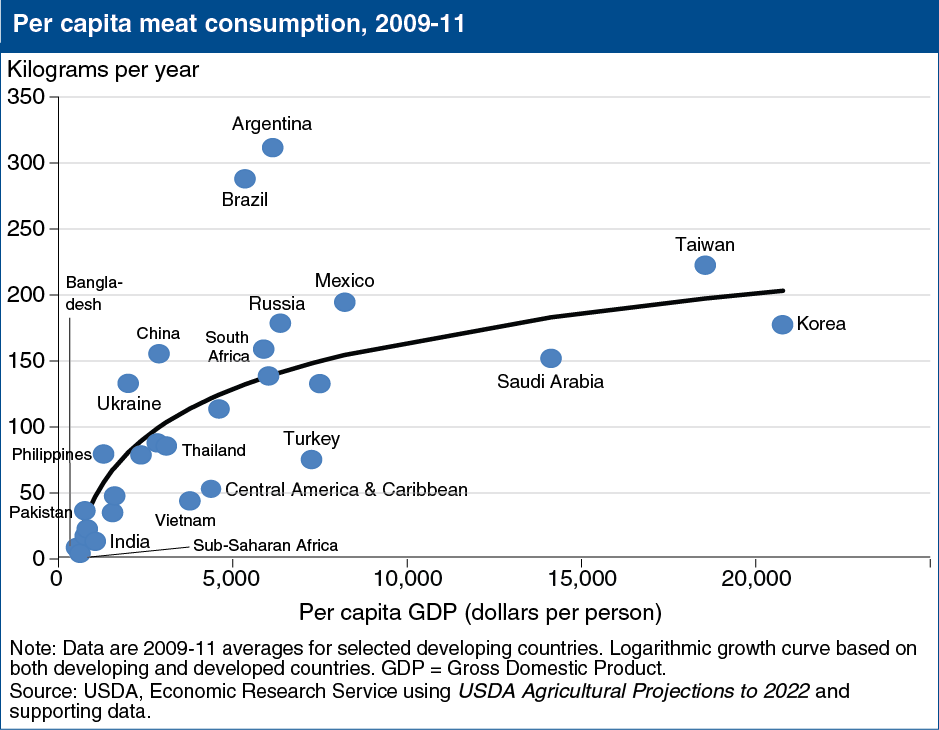Global meat consumption generally increases with higher incomes
- by Economic Research Service
- 8/8/2013

According to USDA’s baseline projections, developing countries will account for much of the increase in projected growth in global consumption of meats and crops in 2013-22. For meats—including beef, pork, and poultry—developing countries are projected to account for 81 percent of projected growth in global consumption and 92 percent of the total increase in world imports between 2013 and 2022. Rising incomes, along with urbanization and changes in consumer preferences, are key factors in both the historical and projected growth in meat demand and trade. As incomes rise, consumers in low- and middle-income countries not only buy more food but also tend to eat more varied diets, increasing their consumption of meat, dairy products, eggs, vegetable oils, and processed foods. Over the next decade, increases in meat consumption in developing countries are projected to average 2.4 percent annually, compared with 0.9 percent in developed countries. Per capita poultry meat consumption in developing countries is projected to rise 2.8 percent per year during 2013-22, much faster than that of pork (2.2 percent) and beef (1.9 percent). This chart can be found in "Developing Countries Dominate World Demand for Agricultural Products" in the August 2013 Amber Waves.

